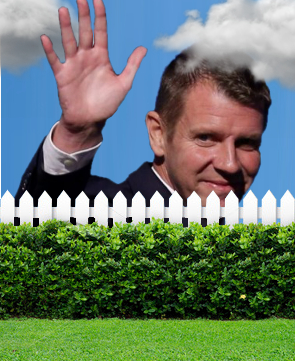Rural councils caught in city sweep
 Rural councils say the NSW local government merger process is mostly about Sydney.
Rural councils say the NSW local government merger process is mostly about Sydney.
The mergers are the result of a review of local governance by the NSW Government, which forced all councils to show they were ‘Fit for the Future’ by meeting a set of key goals and quotas.
Many could not make the grade, and argued the stipulations were too difficult, so they will now be forced to merge with their neighbours.
But Snowy River Shire Mayor John Cahill says rural communities should be left alone.
“I think there's quite a lot of feeling that says just that. And I think there's quite a lot of political ideology behind that too,” he told ABC reporters this week.
“I think the Nationals aren't too pleased with what's going on in the bush, but they're in a coalition.
“If they're going to do the city, which they're determined to do, they won't leave us alone.”
He spoke after a recent round of community consultations about the planned merger of Bombala, Cooma-Monaro, and Snowy River Shires.
Vickii Wallace, another Snowy River Shire Councillor, says the NSW Government is lumping remote areas in with the ones it really cares about.
“It's not us that the State Government's looking to catch,” she told reporters.
“It's actually those city councils that is what it's really all about. If that's your focus, keep rural communities and rural councils out of it all.”
She said the timing of community meetings going on across the state showed the Government was not particularly interested in community responses.
“They are just doing this to suit themselves. It really is not consultation,” Cr Wallace said.
“They had their meetings structured 9:00–11:00am and 3:00–6:00pm, so the average person couldn't get there.
“Why did we not have some meetings that were 5:00–7:00pm to allow other people who can't get to those [earlier] meetings to have their say?
“All the response to that was; ‘Oh you can write a submission’.”
Cr Cahill says the NSW Government has made an offer councils cannot refuse, because if they cannot remain independent then they would be forced to accept the merger.
“[Otherwise] we would receive no further grants, and we wouldn't be eligible for loan funding,” Cr Cahill said.
“That's the life blood. That goes some way between what we receive in rates and what expenditures are.”
“A council is really untenable without those grants.”
The State Government maintains it is acting in everyone’s best interests.
“The analysis also shows the proposed merger is expected to generate, on average, around $1.2 million in savings every year from 2020 onwards,” according to a merger proposal report compiled by the NSW Minister for Local Government.
“Savings will primarily be from the redeployment of back office and administrative functions, streamlining of senior management roles; efficiencies from increased purchasing power of materials and contracts; and reduced expenditure on councillor fees.”
The report said the three shires were relying on rate increases to stay afloat.
“Bombala Council intends to request a cumulative SRV (Special Rate Variation) of 23.0 per cent over a three-year period from 2016-17,” the report said.
“Cooma-Monaro Shire Council intends to request a cumulative SRV of 40.1 per cent over nine years from 2016-17; and Snowy River Shire Council intends to request a cumulative SRV of 67.8 per cent over 10 years from 2016-17.”
The government says a merger of the three shires would produce savings of “more than $13 million... over 20 years”.
Dr Cahill says that because of his shire’s size and amount of roads and bridges, that saving was “nine-tenths of bugger all”.
“Every time you turn around you've got a bridge that's failed for one-and-a-half or two million [dollars], and we've got a few of those which we're still propping up,” he said.
“I think they've determined that they're going to do this in the city. But the bush is quite different.”








 Print
Print